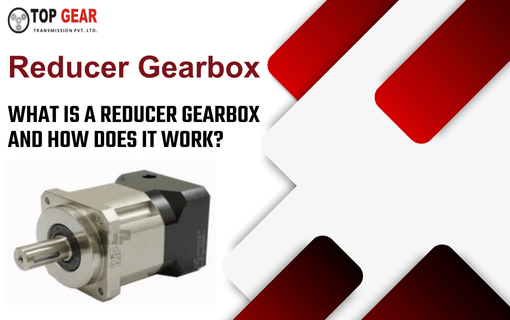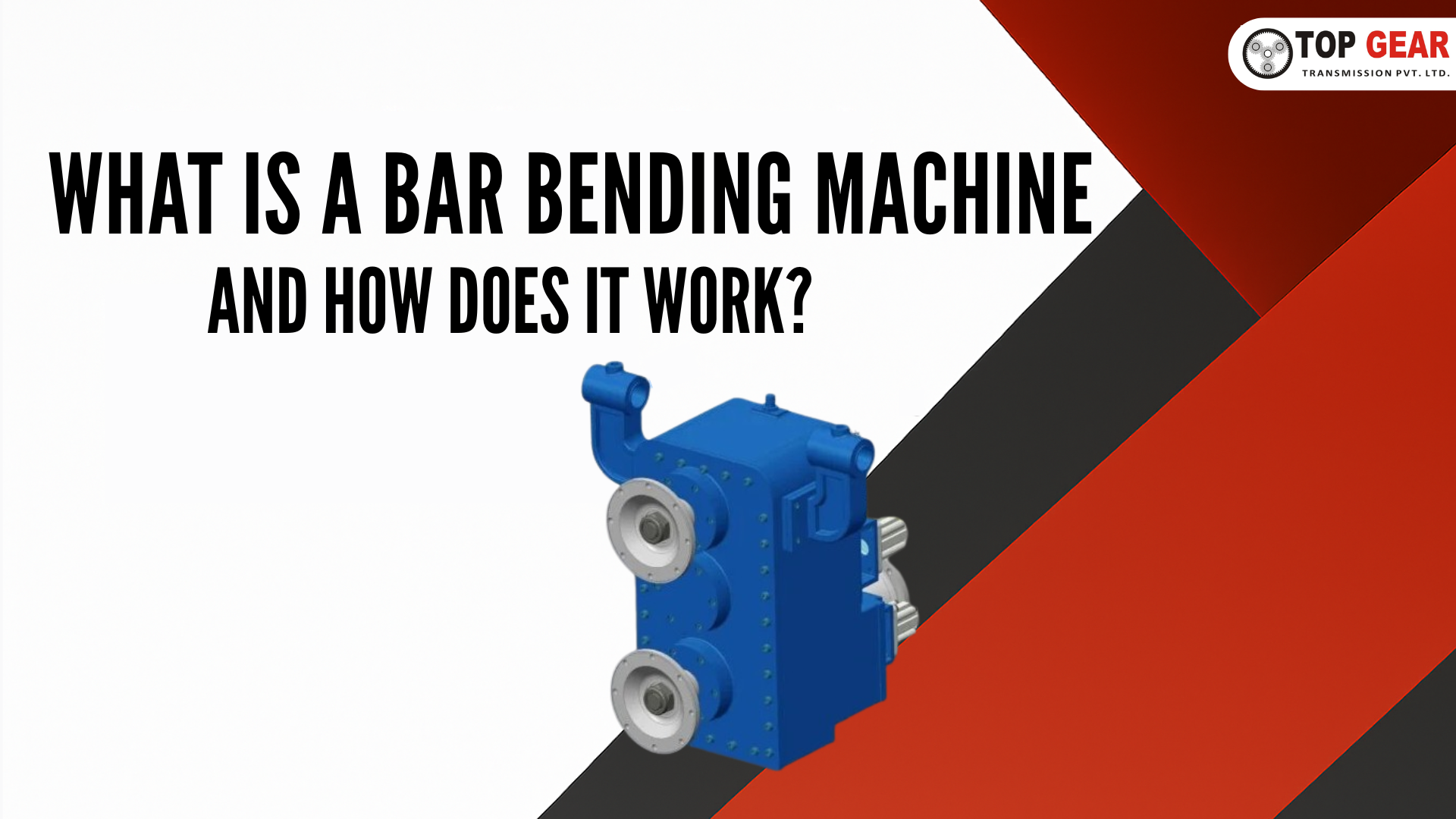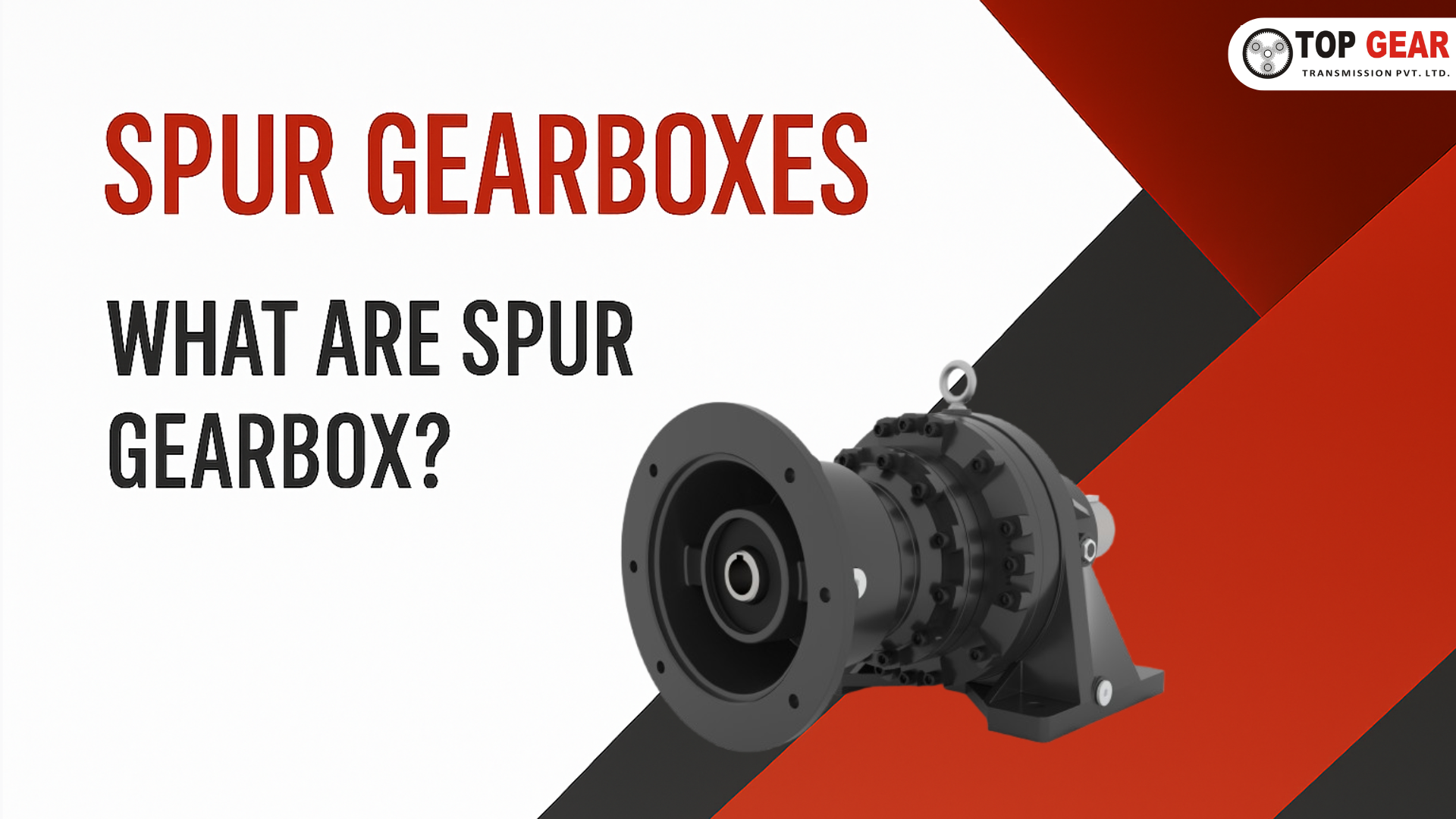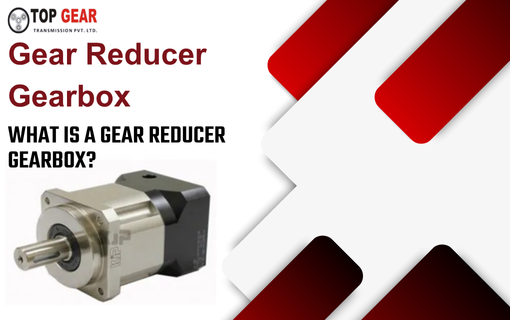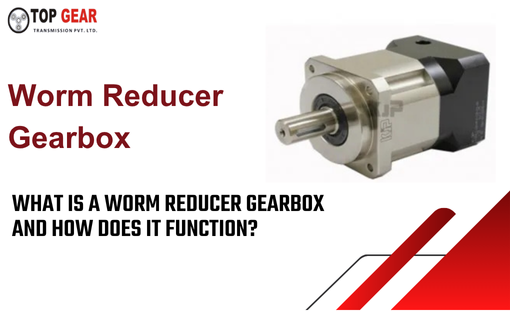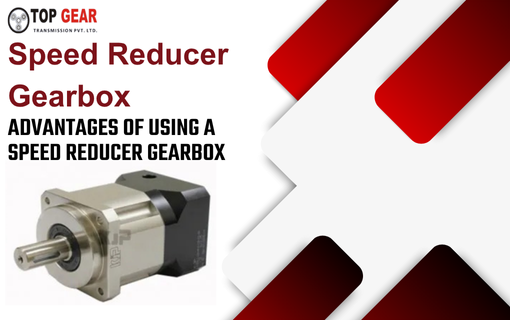A reducer gearbox is a mechanical system that reduces the speed of a motor or other input and increases the torque. Reducer gearboxes are also called by various other names, including speed reducer or gear reducer.
These devices comprise shafts, gears, and bearings, and work with interlocking gears that modify the speed and torque of the input shaft.
However, the above is just an overview of what reducer gearboxes are and their fundamental operational principle. Let’s delve a little more to understand both, while exploring a few other aspects of gear reducers in this blog.
What is a Reducer Gearbox?
Transferring mechanical energy seamlessly and efficiently is often a challenge across various industrial applications, unless you have a reducer gearbox taking care of it.
Reducer gearboxes work as the silent workhorses that keep the industry’s wheels turning. So, whether it is gargantuan equipment or precision machinery, reducer gearboxes are fundamental and essential to the industrial world.
What exactly does a Reducer Gearbox do?
As stated earlier, reducer gearboxes are mechanical devices that help lower the input speed from a motor while increasing the output torque. The device fundamentally serves two purposes: speed reduction and torque enhancement.
As for speed reduction, it lowers the rotational speed of the input power source to a more suitable level for the application involved.
On the other hand, the device multiplies the torque that the motor generates, enabling it to move heavier loads or exert a higher amount of force.
Reducer gearboxes are available in different designs, customized to the specific requirements of every industrial application that uses them.
Some common types include helical gear reducers, bevel gear reducers, worm gear reducers, and planetary gear reducers. Each has unique advantages that make it an integral part of the application it serves.
How Does a Reducer Gearbox Work?
Reducer gearboxes have interlocking gears to modify the speed and torque of the input shaft. The design and internal configuration can differ based on the type of gearbox. However, the fundamental steps include the following.
- Input Shaft and Gear
The input shaft, driven by an engine or electric motor, transfers rotational energy into the gearbox.
- Output Shaft and Gear
The output shaft and the equipment driven are connected. The former also has a gear with a varying number of teeth that interlace with the input gear or a series of intermediate gears.
- Gear Engagement and Speed Reduction
The energy is transmitted in the gearbox via one or multiple gear sets that reduce the speed progressively while raising the torque. Let’s look at a couple of examples.
Planetary Gear Reducers: These use a central sun gear, ring gear, and various planet gears to create a compact, high-torque reduction mechanism. These gears rotate around the sun gear while engaging the ring gear, ensuring a balanced distribution of load and high efficiency.
Helical Gear Reducers: Helical gear reducers use angled teeth that engage while rotating, enabling quieter, smoother operations and a higher load capacity.
- Output Transmission
The resultant slower and more powerful rotation leaves the gearbox through the shaft, while being prepared to power the machinery connected.
This configuration enables the gearbox to convert high-speed, low-torque input into lower speed, high-torque output.
Remember, while choosing the right reducer gearbox, you must understand the specific design and operational characteristics of each gearbox. It is because torque capacity, efficiency, backlash, and mounting alternatives differ considerably.
Now that you’ve seen how a reducer gearbox works, let’s look at some of its benefits.
Advantages of Using a Reducer Gearbox
From increasing torque to enhanced durability, let’s look at five significant benefits that make reducer gearboxes a hit across the industrial world.
- Increased Torque
Gearboxes reduce the rotational speed and increase the torque. This torque enhancement helps enable the driven equipment to handle heavier loads.
- Speed Control
Another benefit is controlling the output speed. Hence, applications involving operations like mixing, conveying, or machining use reducer gearboxes extensively.
- Improved Efficiency
Many may wonder how adding another component to a system increases efficiency. However, that’s where a properly sized gearbox comes into play. It allows the motor to operate within its optimal efficiency range. If not, the motor may not be able to deliver the torque needed at lower speeds, draining the energy and increasing wear.
- Compact Design
Gearboxes can reduce the speed and multiply torque, while not occupying as much space as mechanical speed reduction techniques.
- Enhanced Equipment Durability
Reducer gearbox lowers the stress on the motor and various other connected components, thus contributing to the system’s overall longevity and reliability. In a way, the system serves as a buffer that absorbs shocks and variations.
Let’s now look at the various industrial applications that benefit from reducer gearboxes.
Applications of Reducer Gearboxes
Reduced gearboxes and the various types they come in are versatile machines that serve diverse applications across the industrial world. Let’s look at some.
- Manufacturing: Used in conveyor systems, robotic arms, mixers, extruders, and packaging machinery
- Material Handling: Elevators, cranes, and hoists use reducer gearboxes for controlled speed and enhanced torque.
- Agriculture: Irrigation systems, Harvesters, and tractors use reducer gearboxes to optimize power delivery
- Energy: Reducer gearboxes help convert the slow rotation of blades into high-speed rotation that’s required for electricity generation
- Construction: Cement mixers, excavators, and other heavy machinery are used to derive the power needed to perform heavy and demanding tasks.
- Food and Beverage: Mixers, blenders, filling machines, and packaging equipment, usually with customized designs to meet strict hygiene standards.
- Automobiles: Electrical vehicle powertrains, transmission systems, and differential systems also use reducer gearboxes.
Wrapping it Up!
So, that was about reducer gearboxes and the various aspects associated with them, including the versatile applications that use them.
However, while having the right reducer gearbox for your application, the manufacturer you choose also matters.
This is where Top Gear Transmission, one of India’s leading reducer gearbox manufacturers, steps in. Our product portfolio comprises a broad spectrum of reducer gearboxes, engineered to meet specific application needs and objectives.
We work with an extensive, long-running clientele with which we’ve been working for years, which speaks for our track record and credibility in the industry. So, if you’ve been looking for reducer gearboxes, we are someone you can bank upon. Email us at sales@topgeartransmission.com, and we’d be glad to help you navigate our product details, understand your requirements, and deliver the solution you need.


